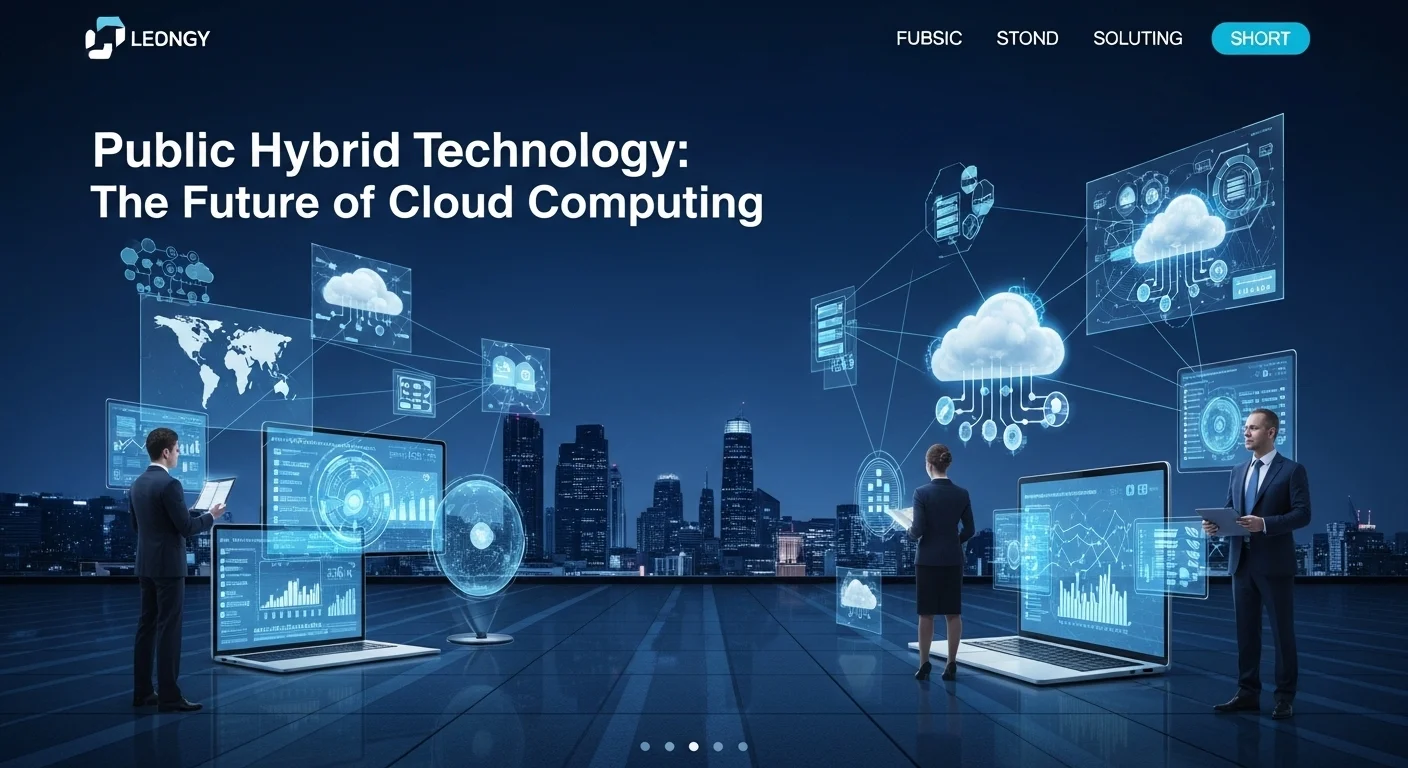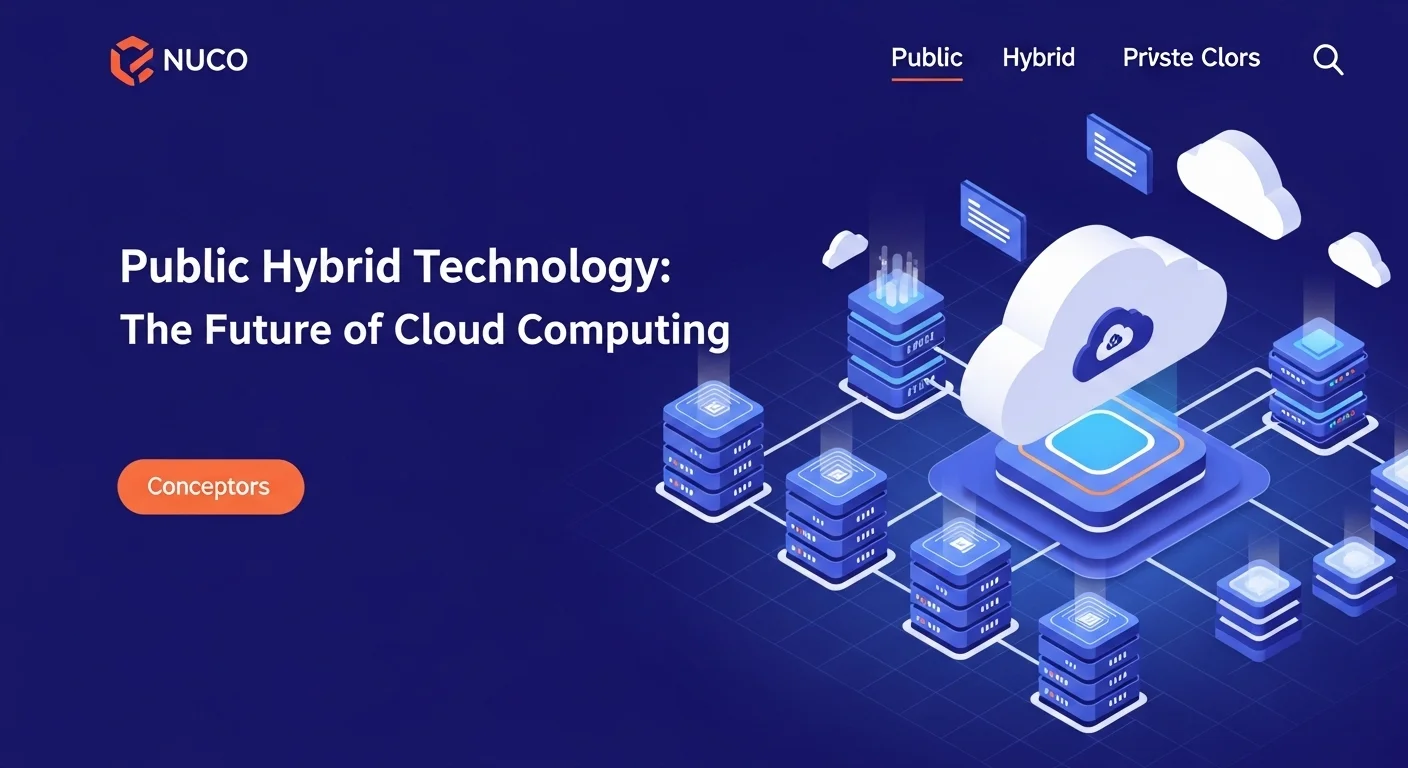Unlocking the Power of Hybrid Cloud: A Practical Guide for Your Business

Executive Summary
In my years working with businesses of all sizes, I've seen technology shifts come and go. But the move to a hybrid cloud model isn't just a trend; it's a fundamental change in how we build for the future. Think of it this way: a hybrid cloud lets you combine the power and pay-as-you-go flexibility of a public cloud (like AWS or Azure) with the security and control of your own private cloud. It's about getting the 'best of both worlds.' You can run your everyday operations on your private setup, keeping sensitive data close, while using the immense power of the public cloud for big projects, handling unexpected traffic spikes, or exploring new innovations. For any leader looking to build a resilient, cost-effective, and forward-thinking company, understanding the hybrid approach isn't just helpful—it's essential for growth in today's digital world.
Table of Contents
Table of Contents
- What Exactly is Hybrid Cloud? A Simple Analogy
- Why is Hybrid Cloud a Game-Changer for Businesses?
- Hybrid Cloud in Action: Real-World Examples
What Exactly is Hybrid Cloud? A Simple Analogy
Let's break this down. In the world of cloud computing, you've got two main options. The public cloud (think services like Amazon Web Services or Microsoft Azure) is like renting a fantastic, fully-furnished apartment in a huge building. You get access to amazing amenities—massive computing power, global reach, advanced tools—and you only pay for what you use. It's flexible and cost-effective, but you share the building with other tenants. On the other hand, a private cloud is like owning your own house. It’s built just for you. You have complete control over security, customization, and everything inside. It’s perfect for sensitive information or specific compliance needs, but you're responsible for all the maintenance and it can be expensive to scale up for a big party.
So, what is a hybrid cloud? It's simply the genius idea of connecting your owned house (private cloud) to a rented apartment (public cloud) with a secure, private walkway. This gives you a seamless environment where you can move things back and forth. You keep your most valuable assets and daily routines in your secure home, but when you need to host a huge event or use a special tool, you can instantly use the space and resources from the apartment building. This strategic combination is the magic of the hybrid model. It offers a level of agility that a single approach just can't match, allowing you to tailor your IT infrastructure perfectly to your business needs.
Why is Hybrid Cloud a Game-Changer for Businesses?
From my experience, the strategic importance of a hybrid architecture boils down to a few key benefits. First, it makes moving to the cloud much less daunting. I've seen many companies with years of investment in their own data centers. The idea of a 'lift-and-shift' to a 100% public cloud is often too complex and risky. A hybrid model creates a bridge, allowing them to modernize at their own pace. They can keep legacy systems running while gradually moving pieces to the cloud, minimizing disruption and making digital transformation a manageable journey.
Second, it's a fantastic strategy for disaster recovery. Instead of building a second, expensive physical data center just in case of an emergency, you can replicate your critical systems from your private cloud to the public cloud. If your main site goes down, you can switch over to the public cloud environment almost instantly. This provides incredible peace of mind and business continuity at a fraction of the cost.
Third, it’s an engine for innovation. Your developers can use the public cloud as a sandbox to experiment with cutting-edge AI, machine learning, and data analytics tools without touching your core production systems. This freedom to build and test quickly, without risk, is how great ideas are born and competitive advantages are won.
And let's not forget 'cloud bursting.' Imagine an e-commerce site on Black Friday. Most of the year, its traffic is predictable. But during that peak shopping weekend, traffic explodes. A hybrid setup allows the site, running on its stable private cloud, to automatically 'burst' into the public cloud, tapping into nearly infinite resources to handle the load. Once the rush is over, it scales back down, and you stop paying for those extra resources. This elasticity is a game-changer for any business with fluctuating demand.
Hybrid Cloud in Action: Real-World Examples
The hybrid model isn't just theory; it's transforming industries. In finance, I've worked with banks that keep their core transaction systems and sensitive customer data locked down in a private cloud to meet strict regulations. Meanwhile, they use the public cloud to build and launch new mobile banking apps and run powerful fraud detection analyses on anonymized data. They get to innovate like a nimble startup while maintaining the trust of a major financial institution.
In healthcare, protecting patient data is non-negotiable. Hospitals often store electronic health records on a secure private cloud. But they can leverage the public cloud's incredible processing power for medical research, analyzing huge datasets to find new treatment patterns, or powering telemedicine platforms that need to scale up to serve thousands of patients.
The retail sector lives and breathes by this model. As I mentioned, handling seasonal peaks is a classic use case. Retailers run their day-to-day e-commerce and inventory on a private cloud for control, but burst to the public cloud for sales events. They also use the public cloud's analytics tools to understand customer behavior and personalize marketing, driving more sales while keeping payment information secure.
Even in manufacturing, with the rise of smart factories (Industry 4.0), a hybrid approach is key. Data from IoT sensors on the factory floor can be processed instantly on-site for real-time adjustments, while massive amounts of historical data are sent to the public cloud for deep analysis to improve efficiency and predict maintenance needs. These examples show how a flexible hybrid framework is not a one-size-fits-all product but a strategic enabler for any industry looking to innovate securely and efficiently.

Your Hybrid Cloud Playbook: Getting Started
Putting a hybrid cloud solution into practice requires a smart mix of technology, strategy, and the right resources. It's a journey, and like any journey, it starts with a good map. Let's walk through the key components of a successful implementation.
The Tech Behind the Magic: Connectivity and Management
First things first, you need to build that secure walkway between your private and public clouds. The connection has to be fast and reliable. A simple way to start is with a Virtual Private Network (VPN) over the internet, which creates a secure, encrypted tunnel for your data. For more critical applications, I always recommend a dedicated connection like AWS Direct Connect or Azure ExpressRoute. This is like having your own private highway to the cloud, bypassing the public internet for better speed, reliability, and security.
Once connected, you need a way to manage both environments without pulling your hair out. This is where unified management platforms are a lifesaver. Tools like Google Anthos, Azure Arc, and AWS Outposts give you a single dashboard to control your applications and resources, whether they're in your data center or in the cloud. They smooth over the complexities, making your hybrid environment feel like one cohesive system. I've seen these platforms completely change the game for operations teams, turning a complex setup into a manageable one.
Containerization, powered by tools like Docker and orchestrated by Kubernetes, has become the gold standard for hybrid applications. Think of Docker as creating a standardized shipping container for your app, so it runs the same way anywhere. Kubernetes is the smart port authority that manages all these containers, telling them where to go and how to scale. This combination gives you incredible portability, allowing you to develop an application once and deploy it seamlessly across your private and public clouds.
From a business standpoint, a hybrid strategy starts with a clear-eyed look at your applications. You need to decide which workloads belong where. This isn't just a technical decision; it's about balancing cost, performance, and security. Some apps might be a simple 'lift-and-shift' to the cloud, while others are worth re-architecting to take full advantage of cloud-native services. This thoughtful planning is what separates a successful hybrid strategy from a costly, confusing one.
And speaking of cost, you must actively manage your cloud spending. This practice is called FinOps, and it's about creating a culture of financial accountability for your cloud usage. With the public cloud's pay-as-you-go model, it's easy for costs to spiral if no one is watching. FinOps brings your tech, finance, and business teams together to monitor spending, set budgets, and continuously optimize costs. In a hybrid world, this is even more critical, as you're balancing capital expenses (your private cloud) with operational expenses (your public cloud).
It's also useful to know the lingo. People often confuse hybrid cloud with multi-cloud. A multi-cloud strategy means using services from more than one public cloud provider (like using both AWS and Google Cloud). A hybrid cloud specifically involves blending a private, on-premises environment with one or more public clouds. You can have a hybrid multi-cloud, but the terms aren't interchangeable. The 'why' is different: multi-cloud is often about avoiding vendor lock-in, while hybrid is about blending private control with public scale. Choosing the right path depends entirely on your business goals.

Pro Tips to Master Your Hybrid Cloud
Once you're up and running, the journey shifts to optimization. Over the years, I've gathered some strategies that consistently help organizations get the most out of their hybrid investment.
Essential Best Practices
First, adopt a 'Zero Trust' security model. The old way was to build a strong wall around your network. In a hybrid world, your network has no clear perimeter. Zero trust works on a simple, powerful principle: 'never trust, always verify.' It means you challenge every single request for access, no matter where it's coming from. Think of it like a bouncer at an exclusive club who checks everyone's ID every single time they try to enter. This involves strong authentication, segmenting your network to limit an attacker's movement, and constant monitoring.
Next, automate everything you can. Managing a hybrid environment manually is a recipe for errors and burnout. Use tools like Terraform or Ansible to define your infrastructure as code (IaC). This allows you to create a 'blueprint' for your IT setup, so you can deploy and update environments consistently and automatically across both private and public clouds. This frees up your talented engineers from routine tasks to focus on work that drives real business value.
Establish strong data governance. With your data living in different places, you need a clear rulebook. This framework should define how data is classified (e.g., public, internal, confidential), who can access it, how it's protected, and when it should be deleted. This isn't just good practice; it's essential for complying with regulations like GDPR and HIPAA and avoiding hefty fines.
For high-level strategic insights, I often recommend resources from industry analyst firms. Gartner, for example, provides deep analysis on cloud providers and market trends. Their 'Magic Quadrant' reports are an excellent resource for making informed decisions. You can usually find their latest research here: Gartner Magic Quadrant. It's a great way to get an objective view of the landscape.
Don't forget the human element. Technology is only as good as the experience it provides to the people using it. Provide your developers with self-service tools so they can get what they need quickly, and use application performance monitoring (APM) tools to ensure your end-users always have a fast, reliable experience. If an application is slow or buggy, it doesn't matter where it's hosted—it's a failure.
Finally, invest in your people. A successful hybrid strategy often requires a new way of thinking and a new set of skills. Creating a Cloud Center of Excellence (CCoE)—an internal team of experts who set standards and guide the rest of the organization—can be incredibly effective. This, combined with continuous training, ensures your entire team is ready to harness the full power of your hybrid cloud for years to come.
Expert Reviews & Testimonials
Sarah Johnson, Business Owner ⭐⭐⭐
This was a good overview, but as a small business owner, I was hoping for a few more real-world examples I could directly apply. Still, helpful for understanding the basics!
Mike Chen, IT Consultant ⭐⭐⭐⭐
Very solid article on hybrid cloud. It helped clarify the 'why' behind the strategy. Some of the management tool explanations were particularly useful for my work.
Emma Davis, Tech Expert ⭐⭐⭐⭐⭐
Excellent and comprehensive piece! It breaks down a complex topic into clear, actionable advice without dumbing it down. This is going into my recommended reading list for sure.



